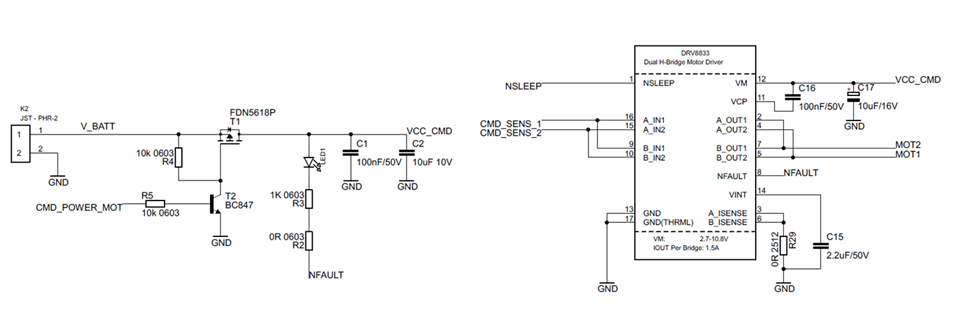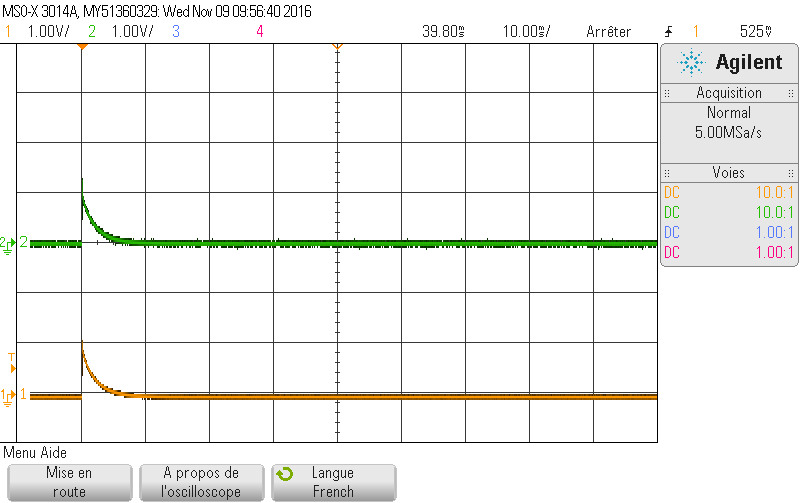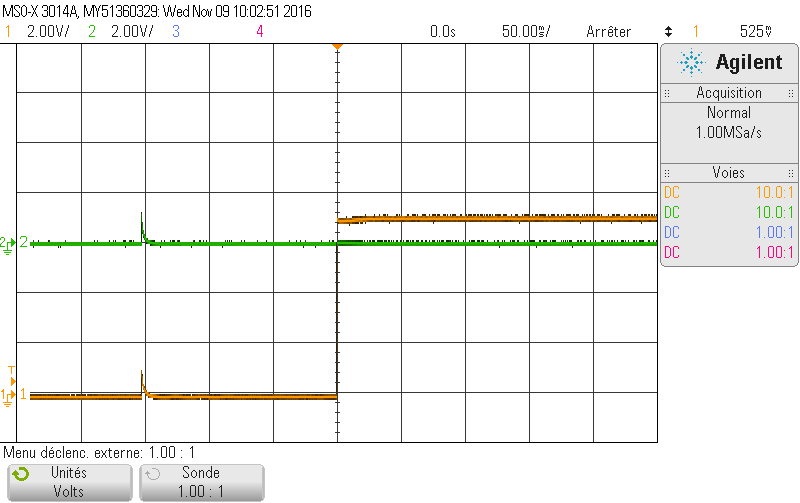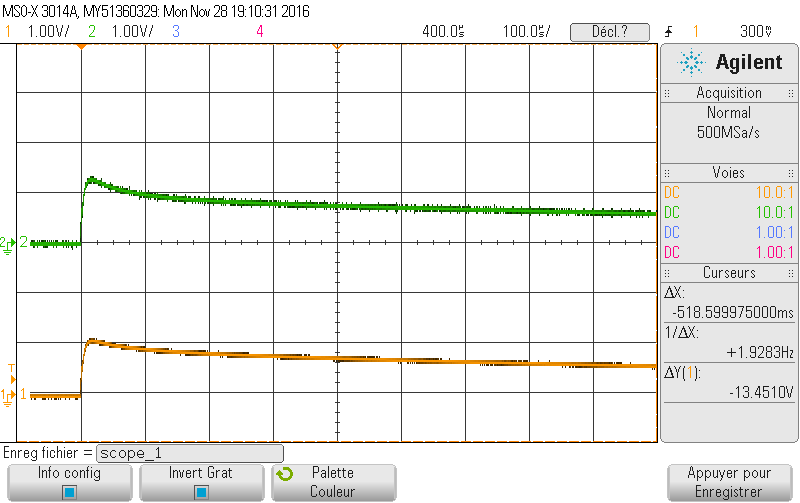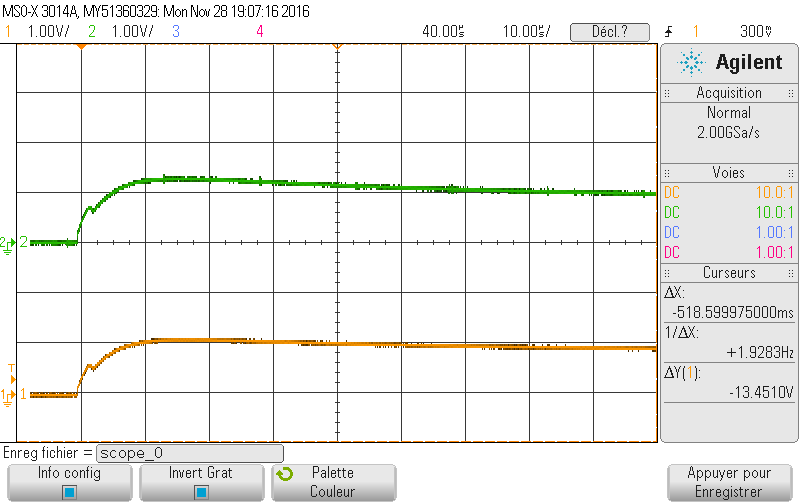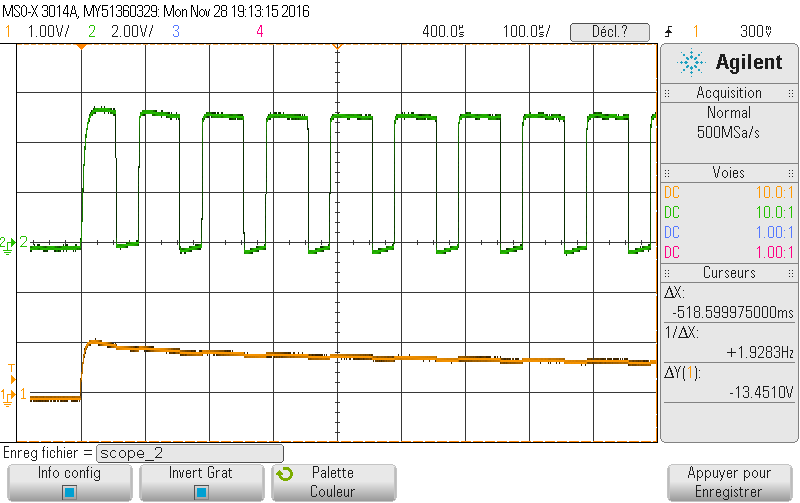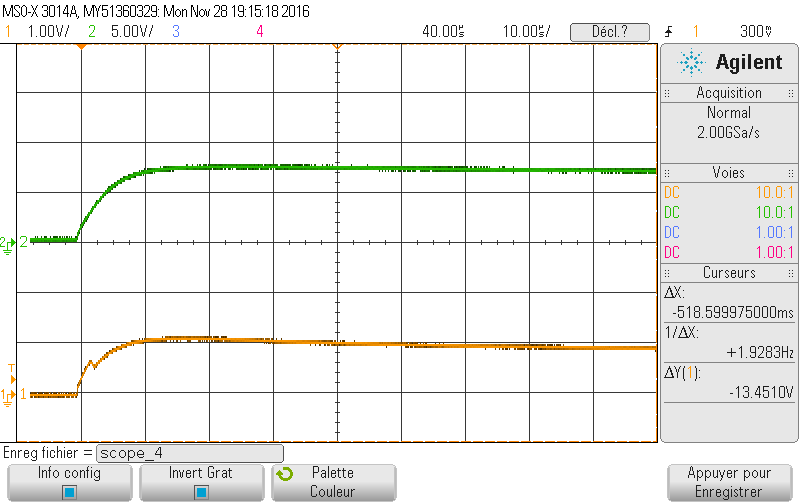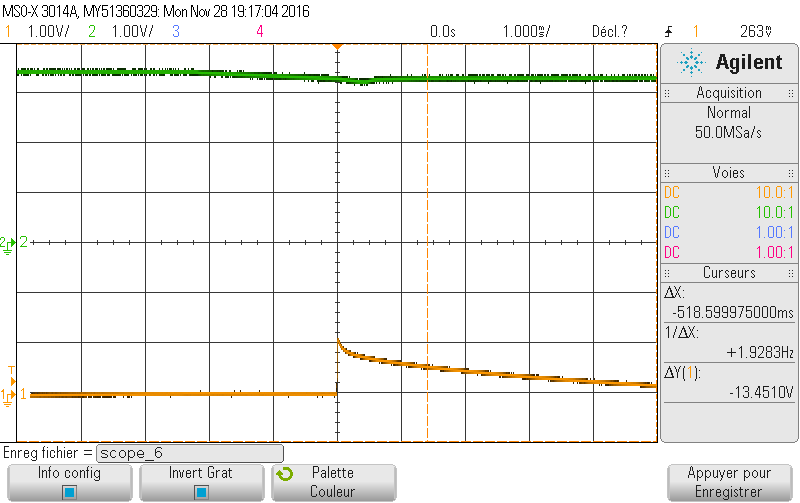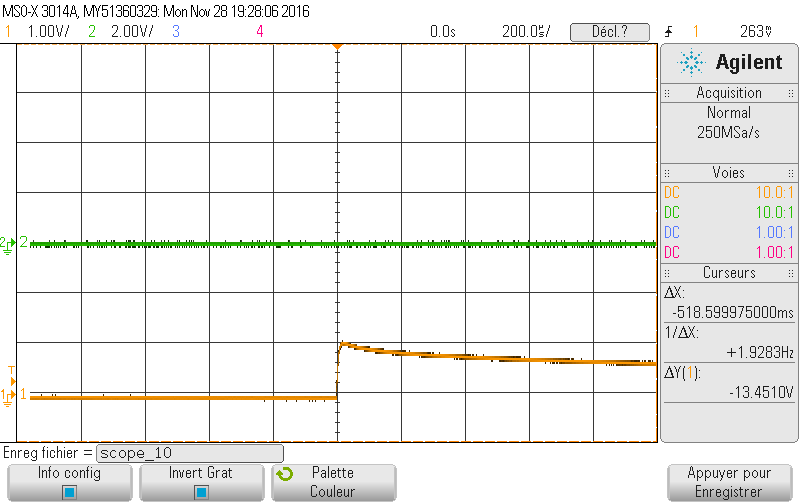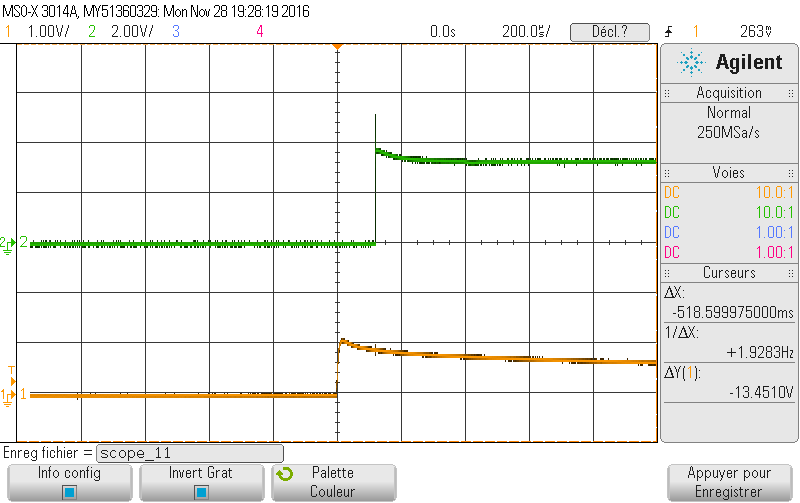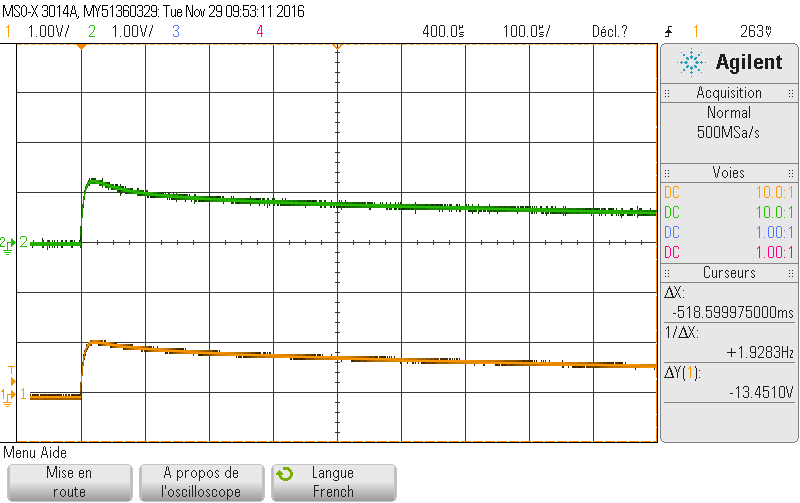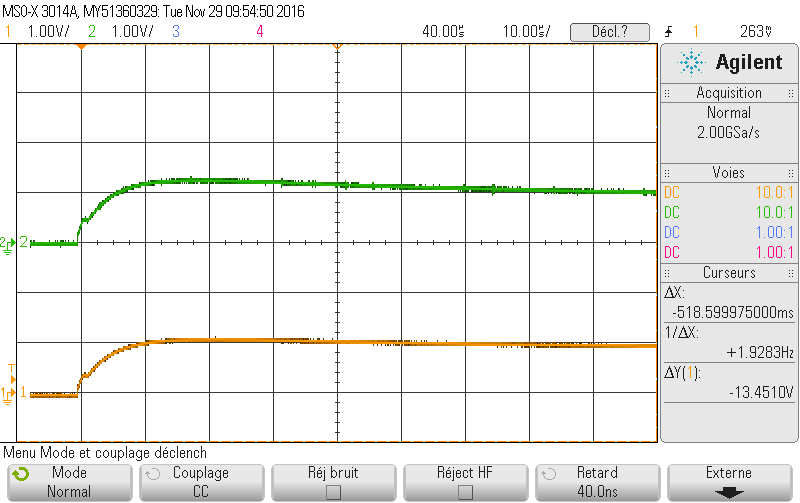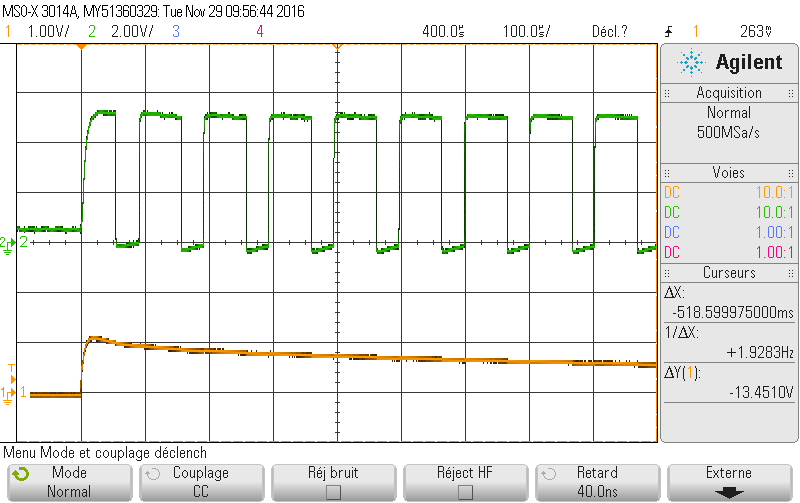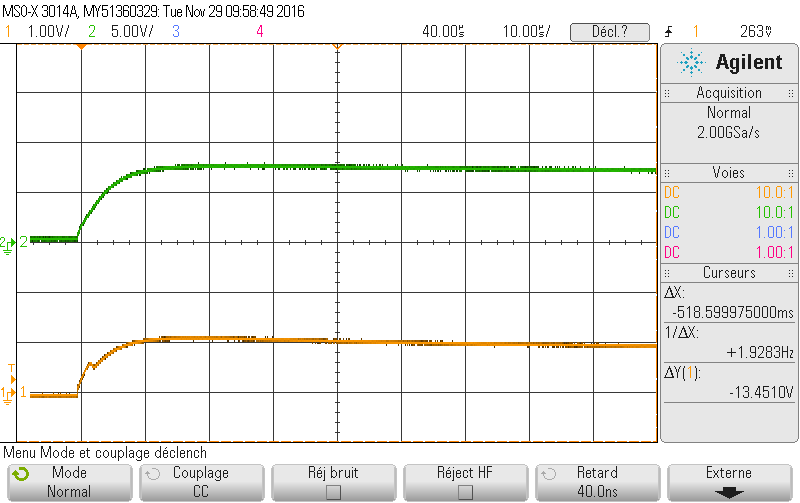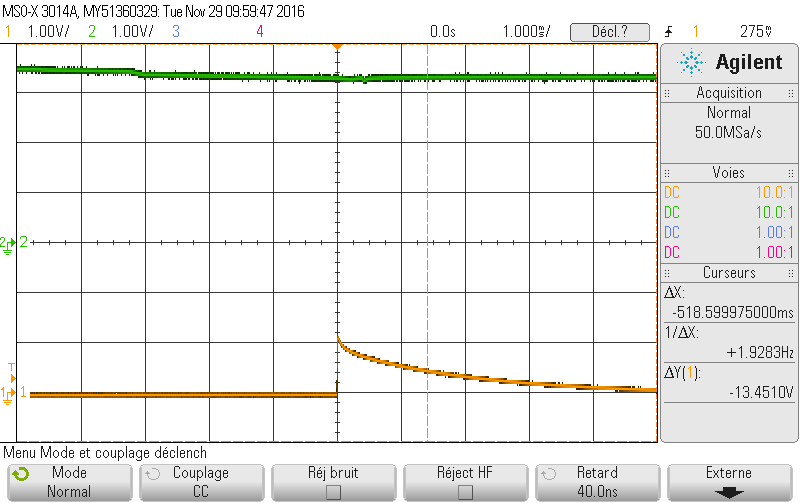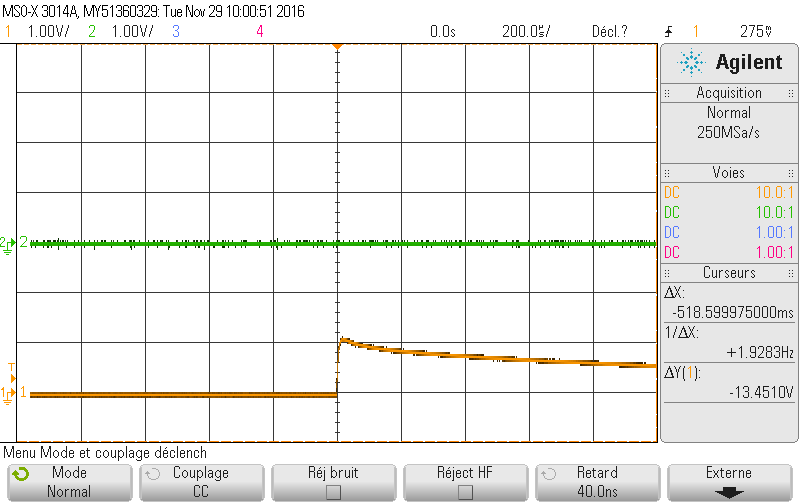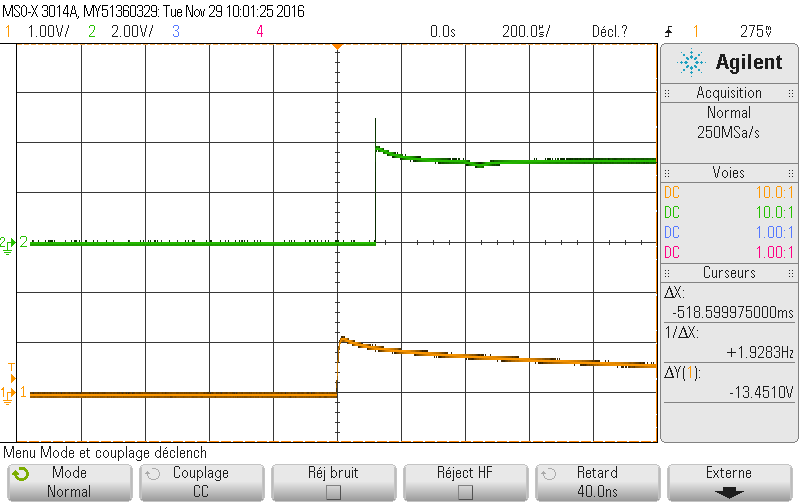Hi,
I've got a DRV8833 in HTSSOP16 package that I put on a TSSOP16 breakout (without heatsink). This leads to the heatsink not being connected to ground. I assumed this wouldn't matter since it's just used for heat sink, is this correct? I'm trying to build www.ti.com/.../drv8833.pdf (page 12, 8.2 typical application) but it doesn't work and I've checked the connections on my breakout board 3x now. I've got Ain1 and Ain2 in VCC (6V) and gnd respectively but no output. It seems that fault is low and I'm not quite sure why. Also, do I need the (correct) caps or should it work without them? Thanks!
EDIT: On page 3 in datasheet it says "both GND pin and device PowerPAD pust be connected to ground". I'm assuming this answers my question?


